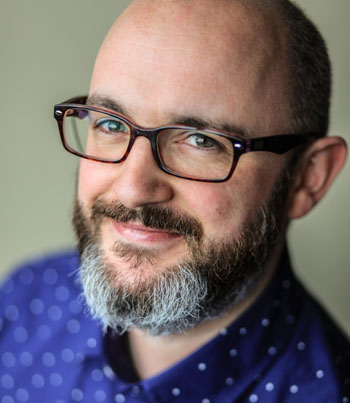
Success in podcasting – a publishing format that’s hit new heights during the pandemic – isn’t just about numbers but about being self-sustaining, says DC Thomson Head of Podcasts Christopher Phin. But a carefully considered publishing strategy makes the difference between a vanity project and a win-win.
Understanding what makes podcasts so popular is an important starting point. “For the punter, they turn dull activities great by filling that hour you spend commuting by tube or time working out, doing the dishes, cleaning,” Phin says.
“For the publisher, podcasts are the most intimate medium. Listen on headphones and the voices come from the centre of your skull – there is, quite literally, no way to get closer.
“Which is brilliant for brand building and relationship building and delivering a highly engaged audience – whether that’s for internal marketing, editorial reasons, or delivering an audience valuable to advertisers.”

Yet while a great podcast might seem effortless, realising this potential is anything but.
In fact, talk in podcasting circles is that many of the podcasts now available – some 1.75m different shows and 43m+ episodes, according to one estimate – ‘podfade’ (for which read: disappear) by their seventh episode.
To explain why, Phin points to the characteristics shared by good podcasts.
“Any good podcast serves and is respectful of its audience,” he explains – ‘respectful’ meaning delivering valuable content in a way that is both engaging and useful with quality production and post-production.
“Podcasts often operate in very tight niches and the best hyperserve small niche audiences very well.”
You could start a podcast today with a smartphone and make something 70% great, Phin presses on. But it takes considered decisions about your format, decent kit, time and effort spent on editing and regular output to make a podcast slick.
“People do like to know a podcast episode is dropped at a particular time – to know the window it will be there for them to listen to,” he adds. “And for the publisher, having a regular schedule is one less thing to think about.”
Any good podcast serves and is respectful of its audience.
A varied mix
DC Thomson’s current ten-strong podcast portfolio ranges from gardening to sport, literature and politics and comprises an equally diverse array of formats. There are four main planks to its podcasting strategy: building deeper relationships with existing audiences; engaging and onboarding new audiences; bringing to life by-lines by enabling its journalists to present in a way that’s more rounded, nuanced and fun; and, lastly, making money.
Key to all is a podcast approach that complements rather than cannibalises the brand from which it came, Phin says. So, The Dirt, from the company’s Grow Your Own magazine, features people’s ‘growing journey’ to celebrate the good, the bad and the ugly of gardening.
The Stooshie offers political analysis and debate from experts drawn from newspaper titles The Courier, Press & Journal, Evening Express and Evening Telegraph. Meanwhile, Pass It On is about funny and fascinating retro household tips.
Widening his reference to podcasts from elsewhere that he currently enjoys, Phin highlights the importance of top audio production values – as demonstrated by one of his current favourites, a podcast about interesting sounds called Twenty Thousand Hertz.
Huge discipline is typified by Fi Glover and Jane Garvey in their BBC podcast, Fortunately, he says. Meanwhile James Acaster and Ed Gamble’s Off Menu – in which guests share their dream dinner courses – neatly demonstrates the power of building a podcast around an original structure.
The best podcasts, he adds, are “a partner, extension and enrichment to your brand without replicating” and, when they do it well, those producing them “run with it”.
One essential for any publisher considering launching a podcast is to plan carefully – not just for the launch or marketing, but for the format itself and finding ways to innovate in interesting and engaging ways around it.
“A good podcast doesn’t just mean a bunch of people talking around stuff,” Phin advises, citing For A Bad Time, Call – a podcast dedicated to anger, featuring messages left on a voice rage box.
Other must-dos are test and then, once launched, keep doing it.
“Do a pilot. Then let key stakeholders in the organisation listen to it in the way people would listen to it – walking the dog and so on, not sitting at a desk – and set expectations internally about what it is likely to deliver,” he continues.
“Though we are enjoying significant growth, the numbers are still small and you need to understand where the value is in those numbers.”
Most podcasts get a spike at launch then numbers go down until after a while it bubbles up, Phin says, and that comes from ambient marketing and trusting yourself: “You know what good storytelling is, so trust yourself. And if you’re worried, go back and change it.”
But above all, he adds, keep going.

You can hear Christopher Phin being interviewed by Ciar Byrne on a recent episode of The InPublishing Podcast, which was sponsored by Acorn Web Offset, the Yorkshire-based specialist A5 and A4 magazine printer.
This article was first published in InPublishing magazine. If you would like to be added to the free mailing list, please register here.












